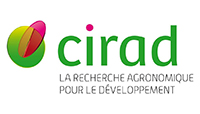The lost generation of Pemphigus populiglobuli (Hemiptera, Aphididae): exploring the taxonomy of the Svalbard aphids of genus Pemphigus
Résumé
Species identification within the aphid genus Pemphigus Hartig, 1839 poses challenges due to morphological similarities and host-plant associations. Aphids of this genus generally exhibit complex life cycles involving primary hosts (poplars) and secondary (mostly unrelated herbaceous) host-plants, with some species relying solely on root-feeding generation. An example is a representative of the genus Pemphigus, trophically associated with grass roots, found in the High Arctic Svalbard archipelago. Historical records tentatively identify it as Pemphigus groenlandicus (Rübsaamen, 1898), although its formal classification remains elusive, due to limited material of freshly collected samples. Recent collections from 2007 to 2024 across various Svalbard sites, revealed its presence under stones in sheltered microhabitats, providing valuable specimens for comparative studies. Our molecular analyses indicate that the Svalbard specimens are not a separate species commonly identified as P. groenlandicus, nor an anholocyclic generation of Pemphigus bursarius (Linnaeus, 1758) or P. borealis Tullgren, 1909, but represent a secondary generation of Pemphigus populiglobuli Fitch, 1859, the Nearctic poplar bullet gall aphid. This suggests that they may have lost their primary host associations and adapted to living on grass roots year-round. Our specimens did not host any known facultative symbionts; however, we detected a strain of Pseudomonas Migula, 1894, closely related to a cold-tolerant bacterium abundant in polar regions. The present study also investigates the taxonomic relationships and morphometric characteristics of grass-feeding Pemphigus populations across the Arctic and an isolated locations on the European continent. Specimens from Svalbard were compared with samples from Greenland and Iceland, but identified no substantial morphometric differences among these geographically separated populations. Similarly, analyses of samples of Pemphigus groenlandicus crassicornis Hille Ris Lambers, 1952 from Sweden and Spain reveals a high morphometric similarity to the Arctic population, indicating a strong link between these traits and geographical variability. Despite the limitations in fresh material availability across locations, minor morphometric variations and shared ecological niches (all populations studied inhabiting grass roots, a unique trait within the Pemphigus genus) suggest treating both P. groenlandicus and its subspecies crassicornis as a junior synonym to P. populiglobuli. The study also demonstrates that the secondary generation of P. populiglobuli is a terrestrial microarthropod that overwinters in a postembryonic life-stage in situ in soil and vegetation under harsh Arctic conditions, and its cryptic life complicates its distribution mapping.
| Origine | Fichiers éditeurs autorisés sur une archive ouverte |
|---|---|
| licence |



